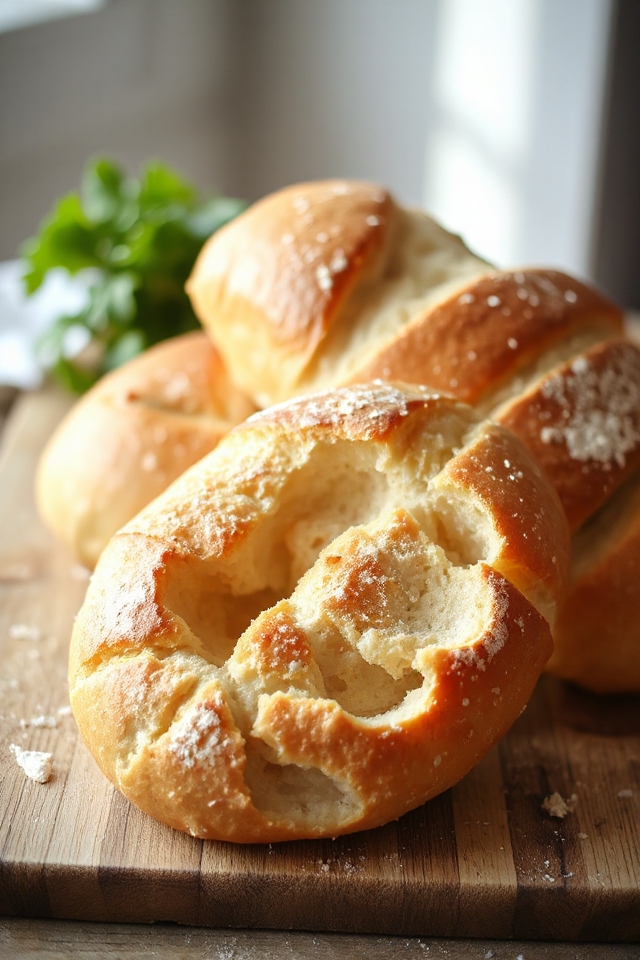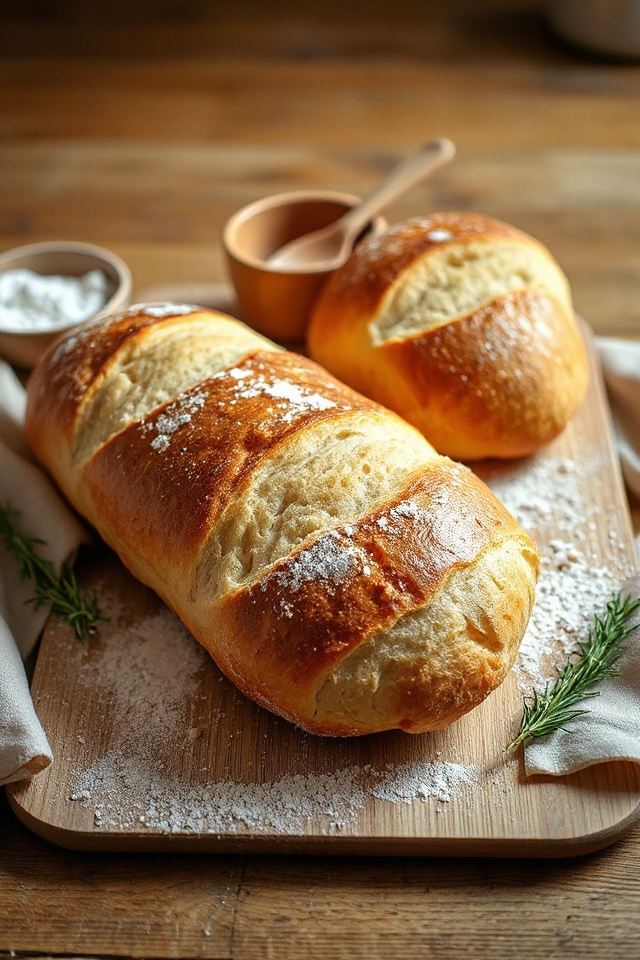Why You’ll Love This Ciabatta Bread Recipe
If you’ve ever tasted fresh, crusty ciabatta straight out of the oven, you know why this recipe is a must-try.
The airy pockets and golden crust create a delightful contrast that’s simply irresistible.
I love how versatile ciabatta is—whether it’s for sandwiches, dipping in olive oil, or served alongside a hearty soup, it always impresses.
Plus, the process is surprisingly manageable! You don’t need to be a professional baker to achieve that artisanal look and taste.
Trust me, once you make it, you’ll find yourself baking ciabatta regularly, filling your kitchen with its warm, inviting aroma.
Ingredients of Ciabatta Bread
When it comes to baking ciabatta bread, the magic really happens with the ingredients you choose. It’s all about creating that perfect balance of flavors and textures. You’ll need a handful of simple ingredients that you might already have in your pantry.
Trust me, once you gather them, the journey to making that crusty, airy loaf will be so worth it. Let’s explore what you’ll need to whip up this Italian delight.
Ingredients for Ciabatta Bread:
- 4 cups all-purpose flour
- 1 ½ cups warm water (about 110°F)
- 2 teaspoons salt
- 1 teaspoon sugar
- 2 teaspoons active dry yeast
- 1 tablespoon olive oil (optional, for flavor)
Now, let’s chat a bit about these ingredients. First off, you might be wondering why we need warm water. It’s like giving the yeast a cozy bath—wakes it up and gets it ready to help the dough rise.
And speaking of yeast, don’t skimp on that; it’s the secret behind those lovely air pockets in your bread. If you’re feeling adventurous, you could even try using bread flour instead of all-purpose for a chewier texture, but I promise you, the all-purpose flour does the trick just fine.
Just make sure your flour is fresh; stale flour is a bit like wearing old shoes—it just doesn’t feel right. So gather your ingredients, and let’s get to baking that ciabatta!
How to Make Ciabatta Bread

Next, it’s time to bring in the flour. Gradually add the 4 cups of flour to your yeast mixture, stirring with a wooden spoon or your trusty spatula until it forms a shaggy dough. Don’t worry if it’s a bit sticky; that’s just the ciabatta personality shining through.
Now, here comes the fun part—kneading. Lightly flour a clean surface and turn the dough out. Knead it for about 10 minutes, or until it’s smooth and elastic. If you’re like me, you might feel like you’re wrestling with a giant, sticky octopus, but just keep at it. If you find your hands are glued to the dough, a little extra flour can help.
Once the dough feels just right, place it in a lightly greased bowl, cover it with a damp cloth, and let it rise in a warm spot for about an hour, or until it doubles in size.
After your dough has risen, it’s time for the fun part—shaping! Gently punch it down (yes, let out some of that pent-up energy) and turn it onto a floured surface. Divide the dough into two pieces and shape each into a rustic loaf. Don’t stress about making them perfect; ciabatta is all about that artisan charm.
Dust with a little flour, cover with a cloth again, and let them rise for another 30 minutes. Preheat your oven to a steamy 450°F, and if you have a baking stone, now’s the time to whip it out for that amazing crust.
Once your loaves are ready, bake them for about 20-25 minutes until they’re golden brown and sound hollow when tapped on the bottom. And there you go, fresh ciabatta bread, ready to impress your friends or just make your kitchen smell like a slice of Italy.
Enjoy the process, and don’t forget to savor that first bite!
Ciabatta Bread Substitutions & Variations
While traditional ciabatta bread is delightful on its own, experimenting with substitutions and variations can elevate your baking experience.
For a nutty flavor, I often swap in whole wheat flour or add some rye flour. If I’m feeling adventurous, I’ll mix in herbs like rosemary or thyme for a fragrant twist.
You could even incorporate olives or sun-dried tomatoes for a Mediterranean flair. If gluten’s an issue, gluten-free flour blends can work, though the texture may differ.
Don’t hesitate to play with different liquids, like adding olive oil or using milk for a richer taste. Enjoy the process!
Additional Tips & Notes
Experimenting with substitutions and variations can lead to some exciting results, but there are a few additional tips to keep in mind for the perfect ciabatta.
First, make sure your ingredients are fresh—especially the yeast. I recommend using a kitchen scale for precise measurements, as this can greatly impact the texture.
Also, don’t skip the long fermentation; it’s key for flavor development. When shaping the dough, be gentle to retain air bubbles.
Finally, a preheated baking stone or cast iron pan can help achieve that crispy crust. Trust me, these little details make a big difference in your ciabatta!
